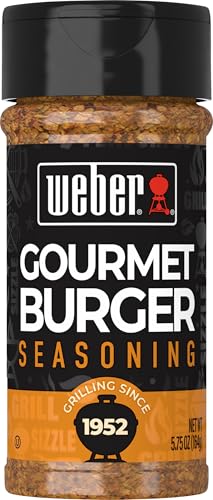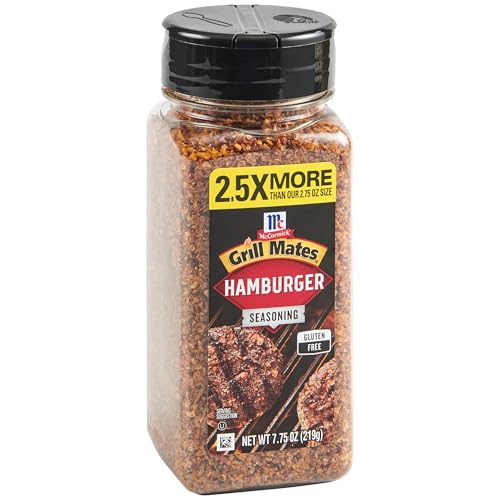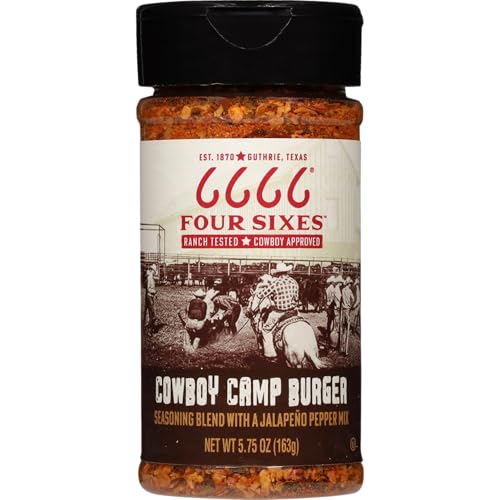Key Takeaways
- Master the Basics of Pan-Frying: Achieving the perfect balance of juiciness and crispiness revolves around understanding essential pan-frying techniques.
- Select the Right Patty: Choose ground beef with around 20% fat content for optimal flavor and texture; freshly ground meat yields the best results.
- Season Generously: A simple mix of salt and freshly ground black pepper enhances the burger’s natural taste—season just before cooking for maximum flavor and crust.
- Invest in Quality Equipment: Use a heavy-bottom skillet or cast-iron pan for even heating, and equip yourself with essential tools like a spatula, thermometer, and tongs for flawless cooking.
- Perfect Your Cooking Technique: Preheat your pan and maintain the right cooking temperature; aim for an internal temperature of 160°F for juicy, perfectly cooked burgers.
- Avoid Common Mistakes: Be cautious of overcooking and always allow burgers to rest before serving to ensure the best moisture and flavor.
There’s something undeniably satisfying about biting into a perfectly cooked burger. Whether it’s juicy, flavorful, and slightly crispy on the outside, a well-pan-fried burger can elevate any meal. I’ve spent years experimenting with different techniques to master this classic dish, and I can’t wait to share my tips with you.
Understanding the Basics of Pan-Frying
Pan-frying a burger involves mastering key techniques to achieve the perfect balance of juiciness and crispiness. Knowing the basics helps create a delicious burger every time.
Choosing the Right Burger Patty
Choosing the right patty makes a significant difference in flavor and texture. I prefer using ground beef with a fat content of around 20%. This fat level ensures a juicy burger, as the fat renders during cooking, enhancing the taste. I also advocate for using freshly ground meat over pre-packaged options for better flavor. Experimenting with blends, such as chuck and brisket, offers unique profiles that elevate the burger experience.
Importance of Seasoning
Seasoning a burger enhances its overall flavor. I rely on a simple blend of salt and freshly ground black pepper. Applying this mix generously to both sides of the patty before cooking boosts the natural flavors. For added flair, I sometimes incorporate garlic powder or smoked paprika. The timing of seasoning matters as well; seasoning right before cooking helps develop a crust while retaining moisture.
Equipment You’ll Need
For pan-frying a burger like a pro, gathering the right equipment sets the foundation for great results. With the right tools, you can create delicious and unique burgers that amaze friends and family.
Ideal Skillets and Pans
I recommend using a heavy-bottom skillet or a cast-iron pan for consistency in cooking. A cast iron skillet distributes heat evenly, ensuring that your burger cooks thoroughly and develops a great sear. Non-stick pans can work too, but avoid those with a thin base as they lead to hot spots and uneven cooking. For the perfect burger, a 10 to 12-inch skillet gives you enough space to work without crowding.
Essential Tools for Cooking
- Spatula: An ultra-flip spatula makes turning your burger effortless without pressing out those valuable juices.
- Thermometer: A meat thermometer ensures precise doneness. Aim for an internal temperature of 160°F for medium, which keeps it juicy without compromising safety.
- Basting Brush: A silicone basting brush allows you to add flavor by applying butter or oil during cooking, enhancing the overall taste.
- Tongs: Use sturdy tongs for flipping and handling your burger. They give you control, letting you get every side perfectly crispy.
- Meat Grinder (optional): If you want to experiment with different meats, a grinder opens the door to creative mixtures and textures.
These tools enrich the cooking experience and elevate the flavor of your burgers. With the right equipment, you’ll be one step closer to crafting mouthwatering masterpieces.
The Perfect Cooking Technique
Creating an incredible burger requires attention to detail, especially in cooking techniques. Mastering these techniques leads to that juicy, flavorful burger with a satisfying crisp.
Preparing the Burger Patty
I start by shaping my burger patties with care. I prefer using ground beef with a roughly 20% fat content for the best flavor. When forming the patties, I handle the meat gently to avoid compacting it; a loose patty allows for better cooking. I aim for about 6 ounces per patty and make a slight indent in the center to prevent puffing during cooking. Seasoning is key—before I even hit the pan, I sprinkle a generous amount of salt and freshly ground black pepper on both sides. This simple seasoning elevates the meat’s natural flavors and creates a delicious crust.
Cooking Temperature and Timing
Getting the cooking temperature right makes all the difference. I preheat my heavy-bottom skillet or cast-iron pan over medium-high heat. Once hot, I add a little oil to help achieve that satisfying sear. For timing, I cook the patties for about 3-4 minutes on one side before flipping them. It creates a nice brown crust, which, in my experience, enhances the burger’s overall appeal. I then cook for another 3-4 minutes on the other side, aiming for an internal temperature of 160°F, which guarantees it’s cooked through. A meat thermometer is my go-to tool to ensure perfection. If I’m feeling adventurous, I’ll even add cheese during the last minute of cooking, covering the pan to melt it perfectly.
Common Mistakes to Avoid
Getting the perfect burger takes practice, and avoiding common mistakes can improve your results significantly.
Overcooking vs. Undercooking
Overcooking or undercooking burgers often leads to disappointment. Overcooked burgers can dry out, losing their juicy flavor, while undercooked burgers pose food safety risks. I prefer cooking my patties to an internal temperature of 160°F for safety, ensuring they stay juicy. A meat thermometer is my best friend in this process. When cooking, I watch for a beautiful brown crust to form, flipping the patties once to maintain their juices. If you notice the edges turning gray, it might be time to check for doneness.
Skipping Resting Time
Skipping the resting time can ruin all your hard work. When the burgers come off the heat, I let them rest for about five minutes. This step allows the juices to redistribute, keeping the burger moist when it’s time to bite into it. Avoid the urge to cut into them right away; patience pays off, and those flavors intensify after a brief rest.
Conclusion
I can’t wait for you to try these tips and techniques for pan-frying burgers. There’s something incredibly satisfying about biting into a juicy burger with that perfect crispy crust. With a little practice and attention to detail you’ll be flipping burgers like a pro in no time.
Remember it’s all about choosing the right ingredients and equipment. Take your time and enjoy the process. Allow your burgers to rest before diving in to savor every delicious bite. Happy cooking and here’s to many tasty burgers ahead!



![Body Language [3-in-1]: 73 Techniques & Tips for Reading People](https://m.media-amazon.com/images/I/41idjwePe7L._SL500_.jpg)







